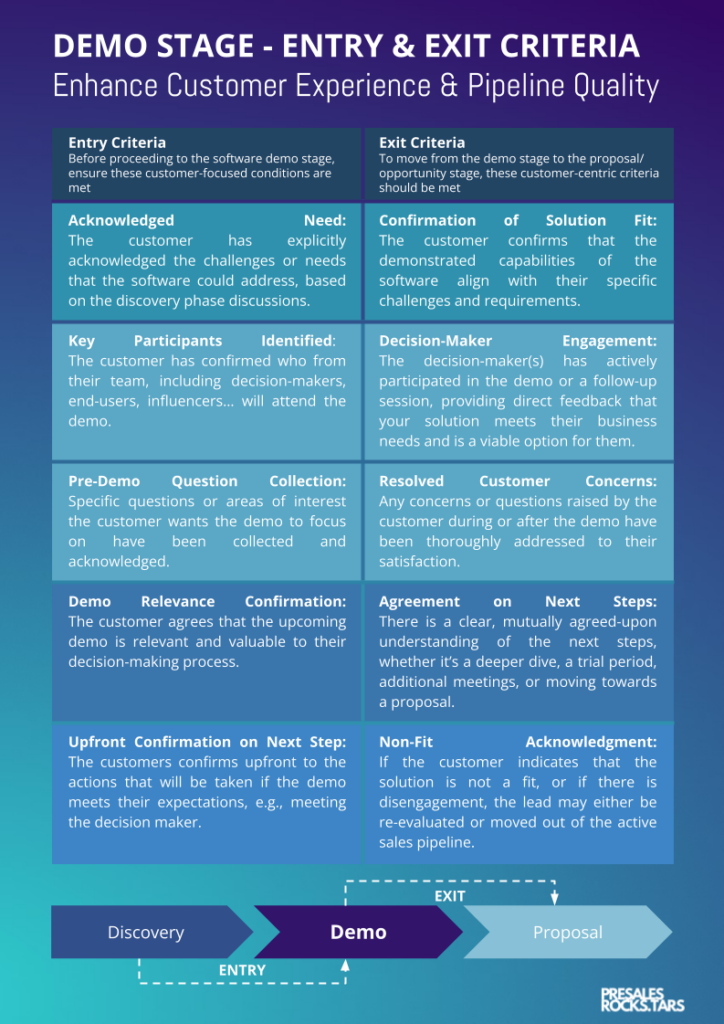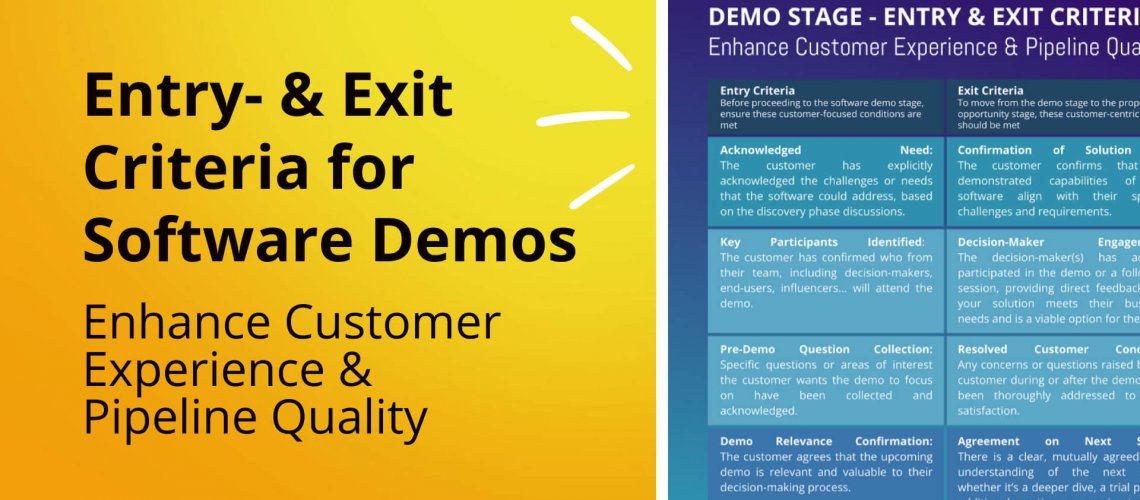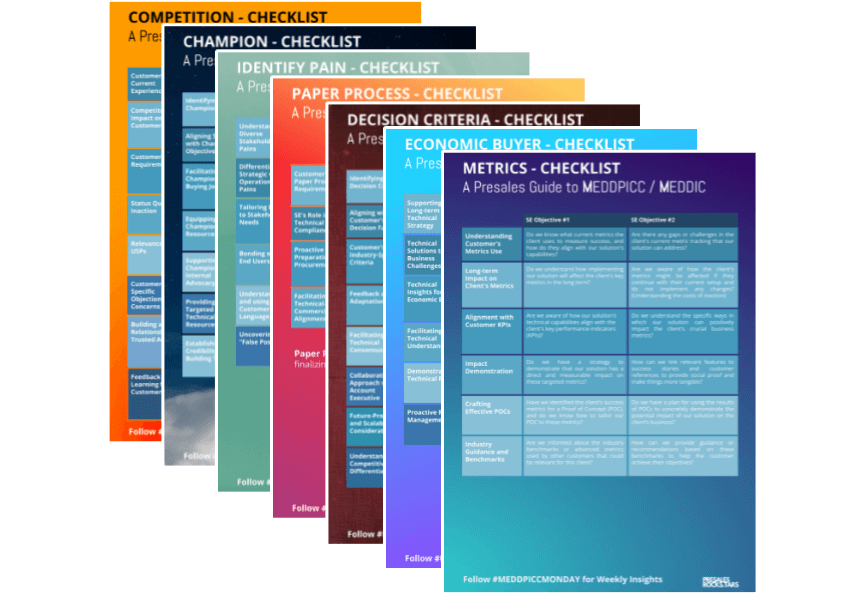Imagine your sales strategy as a precisely calibrated engine. Without deliberate guidelines, this engine might function, but its performance wouldn’t be optimal or consistent. This is where the significance of entry and exit criteria comes into the picture, acting as a blueprint for a structured and high-quality sales process – ensuring the engine runs smoothly and tirelessly.
In this piece, we delve into the critical elements that make your software demonstrations effective, focusing on the presales and solution engineering phases. Here, entry and exit criteria are vital in gathering essential insights to make your demonstrations impactful and highly valuable to customers.
While entry criteria lay the groundwork for initiating a successful software demo, ensuring it is well-prepared, targeted, and likely to be impactful, exit criteria act as benchmarks to measure the demo’s success and guide the sales process forward. These criteria often manifest as mandatory fields or checklists, guiding the transition of an opportunity through various sales stages.
Key Entry and Exit Criteria for Software Demos
The below cheat sheet outlines specific entry and exit criteria tailored to enhance the effectiveness of your demonstrations, steering clear of the „spray and pray“ method. These criteria require a close alignment between sales and presales/solution engineering teams, emphasizing shared responsibility and input.

Why are Entry and Exit Criteria Essential?
Enhancing Pipeline Quality:
- Entry Criteria: Setting high standards for qualified leads sharpens your sales team’s focus on promising prospects, reducing time spent on unlikely deals and boosting successful closures.
- Exit Criteria: These provide an objective framework to evaluate if a prospect is prepared to progress in the sales cycle or needs further nurturing, avoiding stagnation in your pipeline.
Creating a Consistent Framework:
- Uniformity is crucial: These criteria standardize your sales approach, making the process more predictable and manageable – essential for scaling sales and presales operations.
- Streamlining Training and Onboarding: They enable new team members to quickly grasp and replicate a successful demo process, ensuring consistent customer experiences.
Upholding High-Quality Standards:
- Maintaining Excellence: Entry criteria guarantee that each demo meets a minimum quality standard, enhancing your brand’s image and success likelihood.
- Measurable Success: Exit criteria offer tangible metrics to assess each demo’s effectiveness, allowing for ongoing refinement and market adaptability.
Prioritizing Customer-Centric Entry and Exit Criteria
It’s critical that all criteria are fundamentally customer-focused. This approach goes beyond mere task completion, fostering a feedback loop with the customer. For example, after a demo, include a step for the customer to confirm their understanding or interest, rather than just scheduling a follow-up.
This customer-centric method transforms every interaction into a chance for dialogue and deeper understanding, rather than just ticking off tasks. Instead of merely concluding a demo, engage in meaningful conversations, listening to the customer’s feedback. This engagement yields insights into their needs and expectations, guiding a more tailored and effective approach.
Conclusion
Entry and exit criteria transform software demos from simple presentations into strategic tools. They instill discipline and customer-focus in your sales process, guiding you towards successful deals. Implementing these criteria elevates your pipeline’s quality, fosters a scalable sales model, and ensures consistently high-quality interactions.





